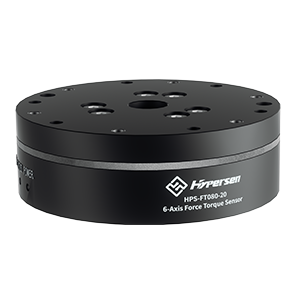Comparative Analysis of Spectral Confocal Sensor Calibration Methods
1. Introduction
Spectral confocal sensors, as a new type of high-precision sensor, have a measurement accuracy of up to ±0.02%. Compared to displacement sensors such as gratings, capacitive sensors, inductive frequency modulation, and differential inductive transducers, their advantages in displacement measurement are more significant. Today, due to the high precision and non-contact measurement advantages of spectral confocal sensors, their applications in precise geometric measurements are becoming increasingly widespread. These applications include displacement measurements of diffuse and planar reflections, flatness measurements, thickness measurements of thin films and transparent materials, surface roughness measurements, etc.
In displacement measurement, since the advent of spectral confocal sensors, their primary function has been to measure displacement. Researchers like Ma Jing and others have studied the dispersion objective lens of spectral confocal sensors, designed the structure of the dispersion objective lens, and improved the performance of spectral confocal sensors. Bi Chao and others used spectral confocal sensors to achieve high-precision and high-efficiency measurement of the rotor blade tip clearance in aircraft engines.
In flatness measurement, Wei Hengzheng and others studied the detection error of spectral confocal sensors. In their research on flatness detection error, they used spectral confocal sensors to measure the flatness of circular flat crystals and obtained the flatness detection error value.
In the thickness measurement of thin films and transparent materials, Zhu Wanbin and others analyzed the measurement errors introduced by the varying refractive indices of transparent plates during flatness measurement and performed compensation. Cao Taiteng and others, based on a 3D data precision measurement machine vision system, used spectral confocal sensors to detect the thickness of transparent materials and the thickness of curved glass surfaces.
In surface roughness measurement, Shen Xiaoyan and others analyzed the advantages and disadvantages of different measurement methods for surface roughness and ultimately chose the spectral confocal sensor-based measurement method, conducting relevant experiments. This provided a new method for precise surface roughness measurement. Lin Jiejun and others used the spectral confocal method to measure the surface roughness of roughness samples and analyzed its measurement uncertainty.
This paper uses the least squares method to calculate calibration errors and perform non-linear error calculations to reduce errors during the calibration of spectral confocal sensors. It also explores the variation of calibration errors under different precision standards, which is of great significance for future applications and research of spectral confocal sensors.
2. Overview of Spectral Confocal Sensors
The spectral confocal sensor is a new type of high-precision sensor that measures small distances using the wavelength of different colored light. Its principle is derived from the confocal microscope, which emerged in the 1980s, and it has been further enhanced by adding color coding technology, linking the wavelength of colored light with the length to be measured. Since the measured length is directly associated with the wavelength of the colored light, measurement accuracy is further improved. The emergence of spectral confocal sensors has greatly promoted the development of precision measurement.
The principle of the spectral confocal sensor is shown in Figure 1. White light passes through a small aperture and can be approximated as a point light source. It then passes through a dispersive prism and a dispersion objective lens to form colored light, which is focused on the central optical axis. When the object to be measured is within the focusing range of the colored light, it reflects these colored lights back along the same path, reaching the spectrometer. The pinhole between the spectrometer and the dispersive prism acts as a filter, allowing only accurately focused monochromatic light from the surface of the object to enter the spectrometer. This significantly improves the measurement accuracy.
3. Calibration Method Research
3.1 Experimental Process
Two methods, a laser interferometer and a high-precision length measuring machine, were used to calibrate the spectral confocal sensor. The laser interferometer used is model XL-80, with an accuracy of ±0.5X10^-6, and the high-precision length measuring machine has an accuracy of 0.1μm.
Figure 1: Principle of Spectral Confocal Sensor












